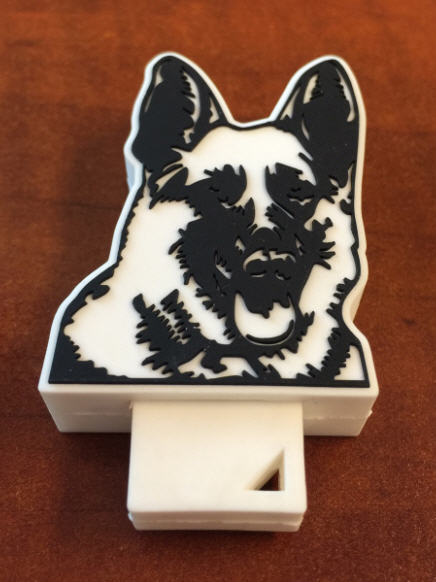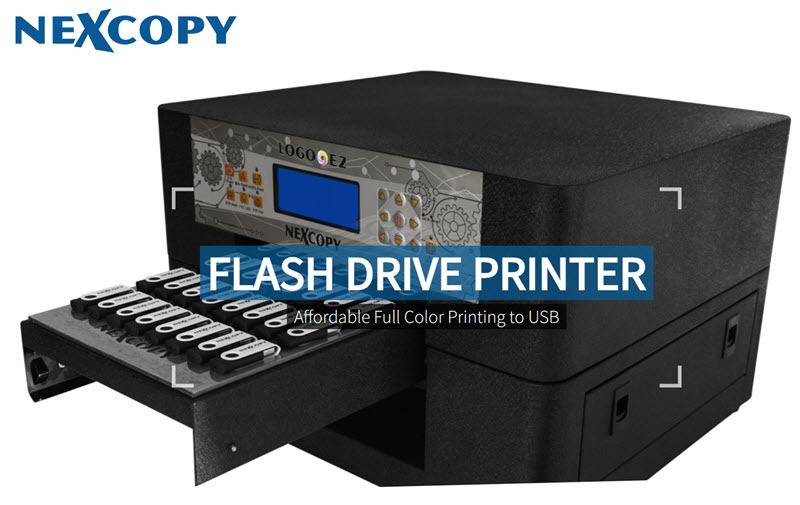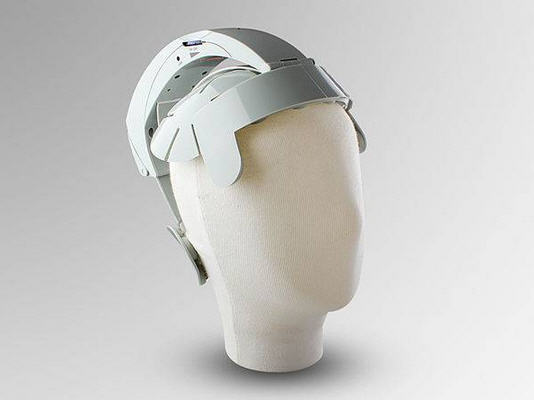USB Flash Drives PCB, COB, UDP
This is a USB stick using the PCB method:

USB Printed Circuit Board
This is a USB stick using the COB method:

USB Chip On Disk
This is a USB stick using the UDP method:

USB Disk in Package

USB Printed Circuit Board

USB Chip On Disk

USB Disk in Package

Police dogs have yet another smell they must detect. Tactical Detection K9 company now trains dogs to sniff out SD cards and USB sticks. The training is in response to better assisting law enforcement in child pornography investigations.
The percentage of a dog’s brain which is devoted to analyzing smells is 40 times greater than humans. For example, humans can detect about 5 million scents and a German Shepherd can detect around 225 million smells.
In a recent investigation a dog was used in the FBI raid of the home of the former Subway spokesman Jared Fogle in Hancock County, Indiana.
What could take investigators hours to find an SD card or USB stick in a house would take a trained dog considerably less time, probably no more than 30 minutes.
According to Tactical Detection K9 it took scientists over four years to isolate the odor associated with memory devices. Now that a specific odor has been identified it takes 8-9 months for a dog to be trained in picking up that scent.
A dog which can sniff out SD and USB sticks can cost upwards of $9,000.
Source: IB Times and Dummies.com .
Continue ReadingComputers on a stick will begin to gain popularity over the next two years. Lenovo is the most recent to offer a compu-stick. The Ideacentre 300 Stick is a 2GB of RAM computer with an Intel Atom Z3735F processor (2M cache + 1.83 Ghz) and runs Windows 8.1.
The Compu-Stick can be plugged into any computer and when you reboot, the hardware now uses the OS of the compu-stick.

Alternatively you may connect the device to a TV and sync a keyboard and mouse and now you have a fully functioning PC with your TV as the monitor.
This is a great step in the right direction as all technology will move towards solid state memory. The Lenovo product has 32GBs of memory which is fine for a first generation product. If they can house a microSD slot in there for expanded memory, it would be an inexpensive solution to a possible data storage problem.
The only caveat left is that unless true Grade A memory is used in these devices the data retention and stability is the week point. With Grade A NAND memory you have a re-write of about 100,000 cycles. SLC memory will help this issue and improve reliability.
Reports indicate the Compu-Stick will run about $150.
Continue ReadingSometimes you will connect a USB to the PC and get an error message saying the drive has a GPT Protective Partition and you cannot format the drive. Here is the fix to resolve the issue:
First, what is a GPT USB stick? The GUID Partition Table (GPT) is the successor to the Master Boot Record. The MBR was created by IBM back in the early 90s. The problem with MBR is the limitation to partition table sizes which is 2 Terabytes.
Since there are no 2T USB flash drives (at the time of this post), there is no need to use GPT as your partition table.
Removing the GPT Protected Partition can be accomplished through the Windows Diskpart program.

There are two ways on “How to make a USB read only.” One method will make the USB read-only in anything it is connected to, so you could say this is a universal way of making a flash drive write protected.
The other way is a PC-specific solution where some registry edits are required to any computer the USB flash drive is connected to.
When we say 100% permanent, this means the USB stick is read only (write protected) on all devices, whether it be computers like a Mac, Windows PC, Linux box, or non-processor based products like a car stereo. This permanent solution also means the status of the drive cannot be changed. The other method flags a USB device to be read only in relationship to the PC it is connected to so that whenever that USB stick is connected to that computer, it makes the USB read only and blocks all write commands to the device.
Most times an IT manager or content owner wants the USB stick to be read only so the files cannot be deleted or formatted off the drive. Another reason for making a USB read only is for the original files to remain the same and block the ability for files to be changed or manipulated. Finally, it’s smart to have USBs read only so that viruses don’t jump onto the drive and possibly spread to other computers.
You will need a Windows7 machine or higher. The Windows7 machine will have DiskPart utility which allows us to perform all sorts of cool things to flash drives, like setting write protection.

This will run your Command Prompt.
Now you will need to find the USB stick connected to your PC. Most likely it’s DISK 1
 This is why I like the 10 port charging station from USBFever. It’s got a logical design for holding ten devices. With the USB ports on the bottom, it keeps the plugs from hanging off the wall. Just above the USB ports are hollow channels you can bundle up the USB cable and stash it away. On top are vertical channels to hold your iPhone, iPad, Smartphone or tablet. The vertical channels are tall enough the devices will sit sturdy and proper.
Finally, the design includes a good balance of power output for the devices. There are a total of 10 USB ports. Eight of which push out a 2.5amp power supply and the remaining two are 1amp. This means the charging dock station will power the tablets as well as the larger iPhone and Samsung product while you can leave the smaller phones to the 1amp channels.
The default color is
Continue Reading
This is why I like the 10 port charging station from USBFever. It’s got a logical design for holding ten devices. With the USB ports on the bottom, it keeps the plugs from hanging off the wall. Just above the USB ports are hollow channels you can bundle up the USB cable and stash it away. On top are vertical channels to hold your iPhone, iPad, Smartphone or tablet. The vertical channels are tall enough the devices will sit sturdy and proper.
Finally, the design includes a good balance of power output for the devices. There are a total of 10 USB ports. Eight of which push out a 2.5amp power supply and the remaining two are 1amp. This means the charging dock station will power the tablets as well as the larger iPhone and Samsung product while you can leave the smaller phones to the 1amp channels.
The default color is
Continue Reading

UPDATE: The Nexcopy USB flash drive inkjet printer has been upgraded to the new LOGO-EZ PRINTER, a 40-up full-color inkjet printer designed specifically for USB flash drive branding. The LOGO-EZ features a fully customized tray that securely holds USB drives in place during printing. Pricing starts around $3,500. For current product specs and availability, visit Nexcopy.com.
Note: The following section refers to the discontinued USB7P model. Nexcopy now offers an improved USB flash drive inkjet printer under the LOGO-EZ name. See Nexcopy’s site for current models.
Nexcopy introduced the USB7P USB flash drive inkjet printer as a compact desktop solution for professional, full-color branding of USB swivel drives. Unlike traditional third-party printing services that require bulk orders and long lead times, the USB7P allowed businesses to take control of their branding process directly from their office. With the ability to print custom logos, promotional graphics, or product-specific designs onto the metal swivel clips of USB drives, companies could create fully personalized flash drives on demand.
This inkjet printer for USB flash drives supported widely used file formats like JPEG and bitmap, making it easy for users to import their artwork and align it accurately to each clip. Designed for efficiency, the USB7P produced vivid, high-resolution prints in less than a minute. Whether for small-run marketing giveaways, corporate training tools, or private-label media distribution, the USB7P gave organizations a flexible and cost-effective way to customize USB drives in-house without sacrificing print quality or turnaround time.
The USB7P utilizes specially designed printable swivel clips provided by Nexcopy, which replace the standard metal clips commonly found on traditional USB flash drives. These printable clips are engineered to fit perfectly on most standard swivel-style flash drives, making it easy to transform a generic drive into a custom-branded product. One of the standout features of this system is the ability to swap out the clips at any time—a major advantage for businesses that frequently update their branding, change promotional campaigns, or require multilingual packaging.
For example, if your logo undergoes a redesign or seasonal artwork is required for a limited-time offer, you can simply print new clips and replace the old ones without needing to purchase entirely new drives. This modular approach to USB branding not only saves cost but also greatly enhances operational flexibility. Companies can even produce different color variations of the same logo or design to align with specific departments, product lines, or event themes—all from the same batch of flash drives.
Powered by HP’s advanced inkjet technology, the USB7P USB flash drive inkjet printer supports over 11 million colors with spot-on PMS color matching. Whether you’re printing a vibrant photo, a subtle watermark, or a two-tone logo, the output remains sharp, consistent, and high-resolution. The printer can produce a full-color set of seven USB clips in just 35 seconds, delivering fast, professional results with minimal effort and no drying time required.
Setup was simple: install drivers, load the 7-slot clip tray, and launch the included Nexcopy software. The printer’s onboard camera helped align your artwork with precision. To print the reverse side, just flip the clips and print again—no drying time needed.
The USB7P USB flash drive inkjet printer was specifically engineered to meet the dynamic needs of modern corporations, where product labeling, software revisions, or branding updates can change rapidly and often with little notice. In industries where management frequently mandates last-minute design or version updates—such as software development, medical devices, education, or government—the ability to perform in-house USB flash drive customization becomes not just a convenience but a necessity.
Unlike outsourcing, which introduces lead times, minimum order quantities, and increased costs, the USB7P allowed organizations to react quickly to evolving requirements. Whether it was a rebranded product suite, a new software patch, or an internal initiative that needed fast deployment, the USB7P gave teams the ability to print full-color, professional-grade USB swivel clips in real time—on demand, and in small or large batches.
Its capability to print seven clips simultaneously with unique or identical artwork made it ideal for short-run branding jobs, quick-turn marketing promotions, sales samples, trade shows, beta program rollouts, or even internal asset labeling. This level of flexibility empowered departments to keep pace with marketing, compliance, or operational directives without relying on third-party suppliers or long production schedules.
Though the USB7P has since been replaced by the more powerful LOGO-EZ printer, the core concept remains the same: give corporate users the ability to control their USB branding pipeline from start to finish—affordably, efficiently, and on their own schedule.
 Revi Charger is a creative form factor. The Revi power station is a cordless device which will accommodate either USB or microUSB sockets.
The Revi was designed to be sleak and stylish charging unit and is available in 550mAh capacity or 1440 mAh capacity. Retailing for $25 and $35 respectively
“Since we are already funded, we were able to gather the world’s top talent to produce the Revi Charger. We want our customers to receive the biggest boost when they need it the most with no wires.”
The company also has one impressive website that is easy to navigate, gather information and order.
Revi Charger homepage.
Revi Charger is a creative form factor. The Revi power station is a cordless device which will accommodate either USB or microUSB sockets.
The Revi was designed to be sleak and stylish charging unit and is available in 550mAh capacity or 1440 mAh capacity. Retailing for $25 and $35 respectively
“Since we are already funded, we were able to gather the world’s top talent to produce the Revi Charger. We want our customers to receive the biggest boost when they need it the most with no wires.”
The company also has one impressive website that is easy to navigate, gather information and order.
Revi Charger homepage.
 Continue Reading
Continue Reading

USB zipper cable
 If anyone ends up buying this USB head massager, please post a picture of you wearing it on our facebook page.
Continue Reading
If anyone ends up buying this USB head massager, please post a picture of you wearing it on our facebook page.
Continue Reading
 The Corsair Voyager Go USB is available as a 3.0 device in 16, 32 and 64GB capacity. USB 3.0 can boost transfer speeds in excess of 135MB/s however we must realize this spec is not real-world environment.
The Corsair Voyager Go USB is available as a 3.0 device in 16, 32 and 64GB capacity. USB 3.0 can boost transfer speeds in excess of 135MB/s however we must realize this spec is not real-world environment.
 Source:Â Corsair, CES.
Continue Reading
Source:Â Corsair, CES.
Continue Reading